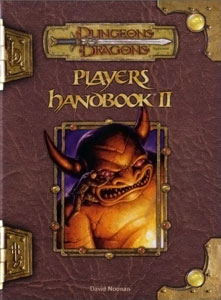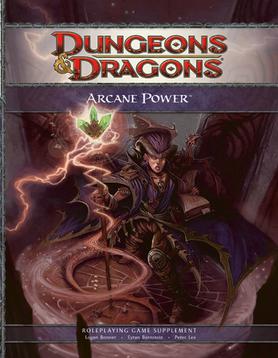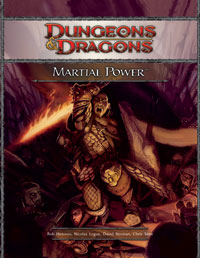In the Dungeons & Dragons fantasy role-playing game, psionics are a form of supernatural power similar to, but distinct from, arcane and divine magic.

The Epic Level Handbook is a rule-book by Wizards of the Coast for the 3rd edition of Dungeons & Dragons. The book was published in 2001, and contains optional game rules for playing characters who have reached a higher experience level than is covered in the standard rules. This is referred to in the book as "epic level" play.

Complete Arcane is a supplemental rulebook for the 3.5 edition of the Dungeons & Dragons role-playing game. It expands upon and replaces an earlier soft-cover rulebook entitled Tome and Blood.

Complete Warrior is a supplemental rulebook for the 3.5 edition of the Dungeons and Dragons role-playing game, published by Wizards of the Coast. It replaces and expands upon an earlier rulebook entitled Sword and Fist.

Complete Adventurer is a supplemental hard-cover rulebook for the 3.5 edition of the Dungeons & Dragons game system published by Wizards of the Coast.

Unearthed Arcana is the title shared by two hardback books published for different editions of the Dungeons & Dragons fantasy role-playing game. Both were designed as supplements to the core rulebooks, containing material that expanded upon other rules.
The fighter is one of the standard playable character classes in the Dungeons & Dragons fantasy role-playing game. A fighter is a versatile, weapons-oriented warrior who fights using skill, strategy and tactics.
The Ranger is one of the standard playable character classes in most editions of the Dungeons & Dragons fantasy role-playing game. Rangers are skilled bushcraftsmen/woodcraftsmen, and often lived reclusive lives as hermits.
A character class is a fundamental part of the identity and nature of characters in the Dungeons & Dragons role-playing game. A character's capabilities, strengths, and weaknesses are largely defined by their class; choosing a class is one of the first steps a player takes to create a Dungeons & Dragons player character. A character's class affects a character's available skills and abilities. A well-rounded party of characters requires a variety of abilities offered by the classes found within the game.
The rogue or thief is one of the standard playable character classes in most editions of the Dungeons & Dragons fantasy role-playing game. A rogue is a versatile character, capable of sneaky combat and nimble tricks. The rogue is stealthy and dexterous, and in early editions was the only official base class from the Player's Handbook capable of finding and disarming traps and picking locks. The rogue also has the ability to "sneak attack" enemies who are caught off-guard or taken by surprise, inflicting extra damage.

Player's Handbook II is the title of a third edition Dungeons & Dragons supplement. It is a handbook of rules and guidelines for the Dungeons & Dragons role-playing game. As the name implies, the book is a supplement to the edition's Player's Handbook. It introduces supplemental rules, new spells and new classes.

Complete Mage is a supplemental rule book for the 3.5 edition of the Dungeons & Dragons role-playing game. It is effectively the sequel to Complete Arcane.

The Psionics Handbook is a sourcebook published by Wizards of the Coast in 2001 for the 3rd edition of the Dungeons & Dragons fantasy role-playing game. It contains a multitude of rules and options for integrating psionic powers into the D&D game.

Player's Guide to Faerûn is a supplement to the 3.5 edition of the Dungeons & Dragons role-playing game.

Arcane Power is a supplement for the 4th edition of the Dungeons & Dragons fantasy role-playing game.

Divine Power is a supplement for the 4th edition of the Dungeons & Dragons fantasy role-playing game.

Primal Power is a supplement to the 4th edition of the Dungeons & Dragons role-playing game.

Martial Power 2 is a supplement published by Wizards of the Coast (WotC) in 2010 for the 4th edition of the Dungeons & Dragons fantasy role-playing game. The book is a sequel to 2008's Martial Power; like its predecessor, Martial Power 2 provides new options for four specific character classes, as well as some general martial variants.

Psionic Power is a supplement to the 4th edition of the Dungeons & Dragons role-playing game.













